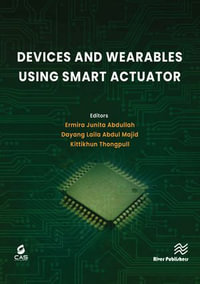
eTEXT
Theory and Approach of Information Retrievals from Electromagnetic Scattering and Remote Sensing
By: Ya-Qiu Jin
eText | 10 July 2006
At a Glance
eText
$239.00
or
Instant online reading in your Booktopia eTextbook Library *
Read online on
Desktop
Tablet
Mobile
Not downloadable to your eReader or an app
Why choose an eTextbook?
Instant Access *
Purchase and read your book immediately
Read Aloud
Listen and follow along as Bookshelf reads to you
Study Tools
Built-in study tools like highlights and more
* eTextbooks are not downloadable to your eReader or an app and can be accessed via web browsers only. You must be connected to the internet and have no technical issues with your device or browser that could prevent the eTextbook from operating.
ISBN: 9781402040306
ISBN-10: 140204030X
Published: 10th July 2006
Format: PDF
Language: English
Publisher: Springer Nature
You Can Find This eBook In
Non-FictionComputing & I.T.DatabasesSciencePhysicsElectricityOptical PhysicsMaterials & States of MatterEngineering & TechnologyEnergy Technology & EngineeringElectrical EngineeringElectronics & Communications Engineering
Electronics EngineeringTechnology in GeneralEngineering in GeneralEarth Sciences, Geography, Environment, PlanningGeographyGeographical Information Systems GIS & Remote SensingChemistryAnalytical ChemistrySpectrum AnalysisPhysical ChemistryReference, Information & Interdisciplinary SubjectsResearch & InformationInformation theoryCybernetics & Systems Theory
This product is categorised by
- Non-FictionComputing & I.T.Databases
- Non-FictionSciencePhysicsElectricity
- Non-FictionSciencePhysicsOptical Physics
- Non-FictionSciencePhysicsMaterials & States of Matter
- Non-FictionEngineering & TechnologyEnergy Technology & EngineeringElectrical Engineering
- Non-FictionEngineering & TechnologyElectronics & Communications EngineeringElectronics Engineering
- Non-FictionEngineering & TechnologyTechnology in GeneralEngineering in General
- Non-FictionEarth Sciences, Geography, Environment, PlanningGeographyGeographical Information Systems GIS & Remote Sensing
- Non-FictionScienceChemistryAnalytical ChemistrySpectrum Analysis
- Non-FictionScienceChemistryPhysical Chemistry
- Non-FictionReference, Information & Interdisciplinary SubjectsResearch & InformationInformation theoryCybernetics & Systems Theory























